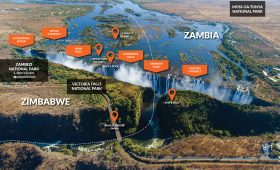Petrovaradin Fortress: A Journey Through Time
History and Significance
Petrovaradin Fortress, located in Serbia, is a site rich with history that stretches back to the Paleolithic era, around 19,000 to 15,000 BC. Recent archaeological findings have revealed that this area has been continuously inhabited since then. The Romans were the first to establish significant fortifications here, known as Cusum, which formed part of their defensive line along the Danube River.
In the Middle Ages, the site gained prominence when King Béla IV of Hungary invited the Cistercian monks to build the Bélakút monastery on the remnants of the Roman fortress. The fortress was later fortified to withstand Ottoman invasions but fell in 1526 after a two-week siege.
The Austrians captured Petrovaradin in 1687 during the Great Turkish War, marking the beginning of a new era. The fortress was redesigned and expanded under the guidance of engineers like Colonel Count Mathias Keyserfeld and Count Luigi Ferdinando Marsigli. It played a pivotal role in the Austrian victory over the Turks in 1716, effectively ending the Ottoman threat to Central Europe.
Exploring the Fortress
Petrovaradin Fortress is a sprawling complex that invites exploration. Its various sections offer a glimpse into different historical periods and architectural styles.
Gates and Walls
The fortress is encircled by robust stone walls, a testament to its strategic importance. These walls offer panoramic views of the Danube River and Novi Sad, perfect for photography enthusiasts. The Royal Gate is a notable entry point, showcasing the fortress’s grandeur.
The Clock Tower
The Clock Tower is a distinctive feature of the fortress. Its reversed clock hands were designed to be visible to fishermen on the Danube. Climbing to the top provides a stunning view of the river and the city, especially at sunset.
Underground Tunnels
The fortress is famous for its extensive network of underground tunnels, constructed in the 18th century. These tunnels, stretching over 16 kilometers, were designed for military purposes, including anti-mine operations. Exploring them offers a unique perspective on the fortress’s defensive strategies.
Best Time to Visit
Visiting Petrovaradin Fortress is most enjoyable during the summer months, from June to August. The warm weather is ideal for exploring the outdoor attractions. Additionally, the fortress hosts various cultural events and music festivals during this period, adding vibrancy to your visit.
Getting There
Petrovaradin Fortress is easily accessible from Novi Sad, a city well-connected by train and bus to other major cities in Serbia and neighboring countries. From Novi Sad, you can take a short taxi ride or enjoy a scenic walk across the Danube River to reach the fortress.
Local Transportation
Once at the fortress, exploring on foot is recommended to fully appreciate its architectural details. For those who prefer not to walk, renting a bicycle or joining a guided tour are excellent alternatives to navigate this historical site.
Summary of Facts
- Petrovaradin Fortress has been continuously inhabited since the Paleolithic era.
- It was fortified by the Romans and later expanded by the Austrians.
- The fortress offers panoramic views of the Danube River and Novi Sad.
- It features an extensive network of underground tunnels.
- The best time to visit is during the summer months.
- Novi Sad is the nearest city, providing easy access to the fortress.
- Exploration options include walking, biking, and guided tours.




